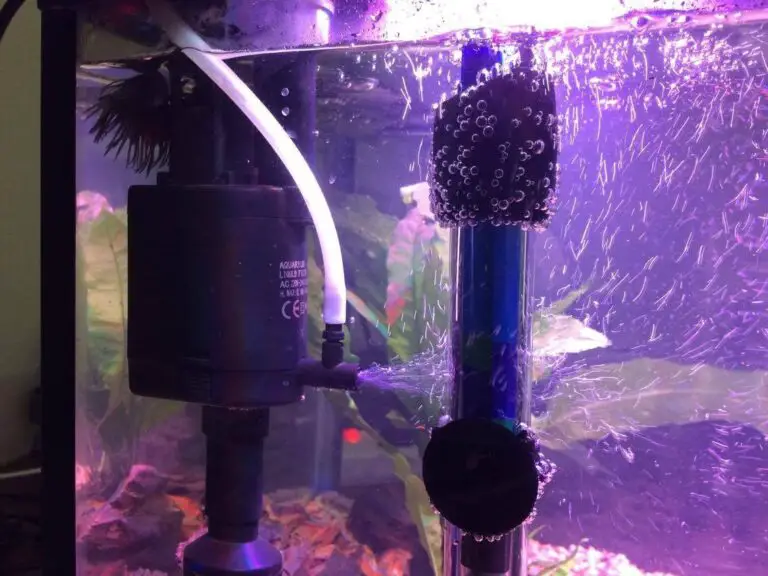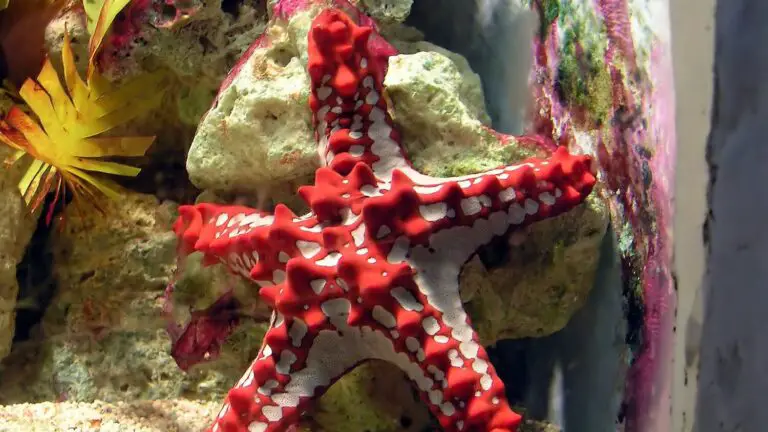Pros And Cons of UV Sterilizer in Aquarium
UV sterilizers are a popular choice for aquarium owners who want to keep their water clean and clear. They use ultraviolet (UV) light to kill bacteria, algae, and parasites that can pose a risk to fish health.
Pros of using UV sterilizers include the fact that they work quickly and effectively at killing unwanted organisms in the tank water.
Also, since the UV light only targets certain microorganisms, it does not affect beneficial bacteria or other aquarium inhabitants like plants or snails.
Once set up properly, these systems require minimal maintenance as they automatically turn on and off when necessary.
On the downside though, some types of UV sterilizers can be expensive depending on size and type of system chosen; this is especially true if you need one with higher wattage than smaller home models provide.
Furthermore there could be potential issues with flow rate being affected by clogged filters which must be regularly cleaned out for optimal performance from your unit.
In addition to this extra cost/maintenance burden, if used incorrectly these systems can cause damage to delicate aquatic life within an aquarium environment due to too much exposure from strong lighting levels emitted by them.
The use of UV sterilizers in aquariums is becoming increasingly popular, due to their potential ability to reduce the spread of parasites and bacteria.
While these devices can be an effective tool for preventing disease, there are a few pros and cons that should be considered before using them.
On the positive side, they are relatively easy to install and operate; plus, they don’t require any additional chemicals or medication.
However, some drawbacks include increased electricity costs as well as possible damage to fish scales caused by too much exposure.
It’s important to monitor water quality regularly while using a UV sterilizer since over-sterilization can lead to poor water conditions and unhealthy fish populations.

How to Setup UV Sterilizer in Aquarium?
A UV sterilizer is a device that uses ultraviolet light to kill harmful microorganisms in the water, such as bacteria, parasites, and algae. It can improve the water quality and health of your aquarium inhabitants.
To set up a UV sterilizer, you need to follow these steps:
- Choose a suitable UV sterilizer for your aquarium size and water flow rate. The wattage of the UV sterilizer determines how much water it can clean per hour. Generally, you need 9 watts for up to 100 gallons, 18 watts for 100 to 200 gallons, 36 watts for 200 to 300 gallons, and 55 watts or more for larger tanks.
- Position the UV sterilizer near the water source, such as the water pump or the filter outlet. Make sure there is enough space for the unit and that it is easily accessible for maintenance.
- Connect the tubing from the water pump or filter outlet to the inlet of the UV sterilizer, and from the outlet of the UV sterilizer to the return pipe or spray bar. Cut the tubing to the appropriate length and secure it with hose clamps.
- Plug in the UV sterilizer and turn it on. Check that the unit is working properly and that water is flowing through it. Adjust the flow rate of the pump or filter until it matches the recommended flow rate of the UV sterilizer. You can use a flow meter or a valve to control the water flow.
- Monitor the performance of the UV sterilizer regularly and replace the bulb when it loses its effectiveness. The bulb usually lasts for 6 to 12 months, depending on how often you use it. You can also clean the quartz sleeve that covers the bulb periodically to remove any dirt or algae buildup.
A UV sterilizer can be a beneficial addition to your aquarium, but it is not a substitute for regular water changes and filtration. You still need to maintain good aquarium hygiene and balance to keep your fish and plants healthy and happy.
Does a UV Light Kill Algae?
If you are wondering whether a UV light can kill algae in your aquarium, the answer is yes, but not all types of algae.
A UV light is a device that emits ultraviolet radiation, which can destroy the cell walls of microorganisms, such as bacteria, parasites, and free-floating algae.
By killing these organisms, a UV light can improve the water quality and clarity of your tank, as well as prevent diseases and infections.
However, a UV light cannot kill algae that are attached to surfaces, such as rocks, plants, or glass.
These algae need to be removed manually or with other methods, such as adding more oxygen or hydrogen peroxide to the water.
A UV light also needs to be used correctly, with the right flow rate and exposure time, to be effective and safe for your fish and plants.
Does UV Light Kill Beneficial Bacteria in Aquarium
UV light is a form of electromagnetic radiation that can kill bacteria, parasites, and algae in the water column of an aquarium.
However, UV light does not discriminate between harmful and beneficial organisms, so it may also kill some of the beneficial bacteria that are essential for the biological filtration of the tank.
According to some sources , the impact of UV light on beneficial bacteria is minimal, because most of them live on surfaces such as filter media, substrate, and decorations, and not in the water column where the UV light reaches.
Therefore, using a UV sterilizer in an aquarium can be a useful way to prevent disease outbreaks and improve water clarity, as long as it is used correctly and with proper precautions . Some of these precautions include:
- Choosing the right size and wattage of the UV sterilizer for your tank
- Adjusting the flow rate of the water through the UV sterilizer to ensure optimal contact time
- Cleaning the quartz sleeve and replacing the UV bulb regularly to maintain efficiency
- Turning off the UV sterilizer during feeding time to avoid killing beneficial microorganisms that some fish and invertebrates may eat
- Monitoring the water quality and performing regular water changes to avoid over-sterilization and nutrient depletion
Using a UV sterilizer in an aquarium can have both pros and cons, depending on how it is used and what kind of tank you have. It is important to weigh these factors carefully before deciding whether to use one or not.
Should I Run My UV Sterilizer All the Time?
Depends on several factors, such as the type and size of your UV sterilizer, the water quality and flow rate, the amount and type of organisms you want to eliminate, and the maintenance requirements of your device. There is no one-size-fits-all solution for every situation.
Some general guidelines are:
- If you have a submersible or in-line UV sterilizer, you can run it continuously as long as it does not overheat or damage the pump or filter. However, you may need to replace the bulb more often, as it will lose its effectiveness over time.
- If you have a hang-on or external UV sterilizer, you may want to run it only when needed, such as during an algae bloom or a disease outbreak. Running it constantly may reduce the beneficial bacteria in your filter and lower the oxygen levels in your water. You should also monitor the water temperature and adjust the heater accordingly, as the UV light may heat up the water.
- If you have a large or powerful UV sterilizer, you may want to run it intermittently or with a timer, as it may kill too many organisms at once and cause a sudden drop in water quality. You should also check the water parameters regularly and perform water changes as needed to remove the dead matter and toxins.
- If you have a small or weak UV sterilizer, you may want to run it more frequently or with a higher flow rate, as it may not be able to kill all the organisms effectively. You should also supplement it with other methods of filtration and water treatment, such as mechanical, chemical, and biological filters.
Ultimately, the best way to determine how often to run your UV sterilizer is to experiment and observe the results.
You should always follow the manufacturer’s instructions and recommendations for your specific device.
You should also test your water quality regularly and adjust your UV sterilizer accordingly.
Remember that a UV sterilizer is not a substitute for proper aquarium maintenance, but rather a supplement that can enhance your water quality and fish health.
Is Aquarium UV Light Harmful for Humans?
UV light is a type of electromagnetic radiation that has a wavelength range from 10 nm to 400 nm.
UV light can be divided into three categories: UVA, UVB and UVC.
UVA is the least harmful and most common type of UV light, while UVC is the most harmful and rarest type of UV light.
Aquarium UV lights are usually used for two purposes: to enhance the coloration of fish and corals, or to sterilize the water from bacteria, algae and parasites.
Depending on the purpose, different types of UV lights are used. For color enhancement, UVB lights are often used, as they can stimulate the production of pigments in fish and corals.
For sterilization, UVC lights are used, as they can destroy the DNA of microorganisms and prevent them from reproducing.
UV light can be harmful for humans if they are exposed to it directly or for a long time.
UVB light can cause sunburn, skin aging and skin cancer, while UVC light can cause eye damage, skin burns and cancer.
Therefore, humans should avoid looking at UV lights directly or touching them without protection.
UV light can also damage some materials, such as plastics and rubber, by causing them to degrade or crack.
Aquarium UV lights are usually designed to minimize the exposure of humans and fish to harmful UV rays.
They are often enclosed in a casing or a tube that filters out most of the UV rays, or they are placed inside the filter or sump where the water passes through them.
They also have a low wattage and a short duration of operation to reduce the risk of overheating or overexposure.
However, aquarium UV lights are not completely safe and should be used with caution and care.
Some precautions that should be taken when using aquarium UV lights are:
- Follow the manufacturer’s instructions on how to install, use and maintain the UV light.
- Wear protective gloves, goggles and clothing when handling the UV light.
- Turn off the UV light when working on the aquarium or changing the water.
- Keep children and pets away from the UV light.
- Replace the UV bulb regularly, as it may lose its effectiveness over time.
- Dispose of the used UV bulb properly, as it may contain mercury or other hazardous substances.
Aquarium UV lights can be beneficial for fish health and appearance, but they can also pose some risks for humans and materials. Therefore, they should be used wisely and responsibly.
Do I Need a UV Sterilizer for My Freshwater Tank?
A UV sterilizer is not a necessary piece of equipment for most freshwater tanks, but it can be beneficial.
A UV sterilizer helps to reduce the number of pollutants and parasites in your tank by using ultraviolet light to kill harmful microorganisms.
It can also help keep algae growth down and make your tank healthier overall.
If you are dealing with persistent issues like cloudy water or fish diseases, then adding a UV sterilizer may be worth considering.
Conclusion
In conclusion, the UV sterilizer is a great tool for aquarium owners to help keep their fish tanks clean and healthy.
It has its pros and cons, but with careful consideration of all factors involved, an individual can make an informed decision as to whether or not this type of filtration system is right for them.
With proper maintenance and monitoring, a UV sterilizer can be just the thing needed to ensure that your aquarium remains in top shape.






